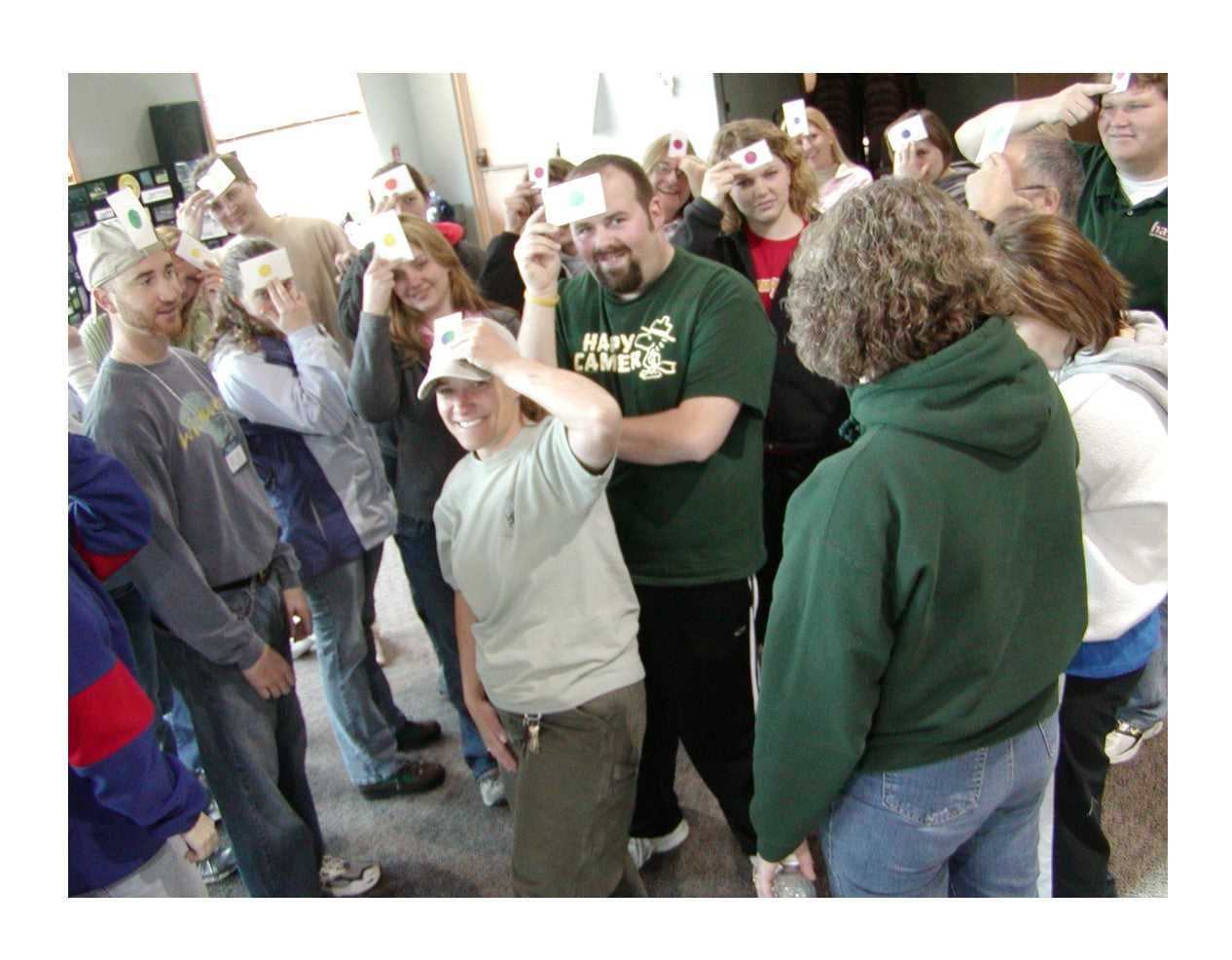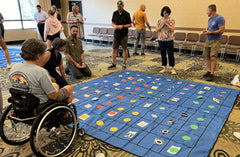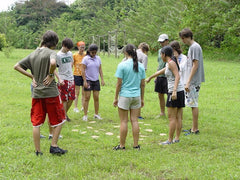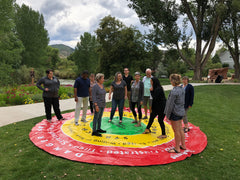Diversity Dots
Training Wheels Gear
Diversity Dots is a unique activity that aids in discussions around Diversity, Equity and Inclusion (DEI). This activity helps learners understand, support, and celebrate coworkers with rising identities through compassion and intersectional awareness.
This activity consists of a unique collection of laminated, colored dot cards.
Group Size: 10-50
Preparation/Lead In: Choose colored dot cards to give to each of your participants. Be sure to have a wide variety of solid dot cards and mixed dot cards (dots that are half one color and half another color) and 1 unique solid dot color card. Try to have one group that is much larger than the other groups. For example, if you had 30 participants in your group, you could choose 10 yellow dots (majority dot group), 8 blue dots, 5 green dots, 3 dots that are half green and half blue, 2 dots that are half yellow and half blue, 1 dot that is half green and half yellow, and 1 red dot (unique dot card).
Step-by-Step Procedure:
Invite your participants to make a single file line or circle and close their eyes. Tell them that you will go around and hand them a card that they are to place on their forehead. They must not talk for the rest of the game and must keep their eyes closed even after they have received their cards. As you are passing out the dot cards, make sure you choose the participant that receives the unique color dot sensitively.
After everyone has a dot card, they may open their eyes. Now tell them you are going to be intentionally vague with the directions, as it is a part of the activity. Instruct them to, "Get into your groups without talking." Make sure you do not tell them to organize themselves according to their dots. Just tell them to get into groups.
The participants may group themselves however they choose, although they inevitably will do so by the color of their dot cards. They also must not talk during this process. Make sure that you are paying attention to the group dynamics; participants will sometimes push other participants out of the groups. Leaders and followers will arise, and the 'Majority dot' group will also lend some interesting dynamics.
When it seems that almost everyone has found a group and the person with the unique dot has some idea that s/he is alone, stop the activity. Participants should look around and then take off their dots to see what color dot card they have.
Debriefing Topics:
- How did you find your group? How did you help each other out?
- How did it feel to find your group? How did you feel if you didn't find your group?
- Were you happier if your group was bigger or smaller?
- Why did you choose to group yourselves in this way? Remind participants that all you said was 'get in your groups.'
- Did you try to join any groups but get pushed away? For people with multicolor dots, how did you know which group to join?
- How would this activity relate to real life?
- How do you group yourselves in real life? How do you choose your friends?
- Do people tend to group themselves by the way they look? Think about your friends. Do they look like you? Do they dress the same? Are they the same race?
- Why do you think people group themselves based on how they look?
- Why do you think people hang out with people who are similar to them? Is there any value in seeking out people to be friends with who are different than you? What would be the benefits/advantages? What would make this difficult?
- Did you experience any conflict with other groups? How did you treat those that were not a part of your group?
- What were some behaviors that were demonstrated towards you during the activity?
This unique activity is published in Setting the Conflict Compass, by Michelle Cummings with Mike Anderson. All Rights Reserved.
50 Laminated, Colored Dot Cards, 5x7 mesh envelope and complete directions included.







